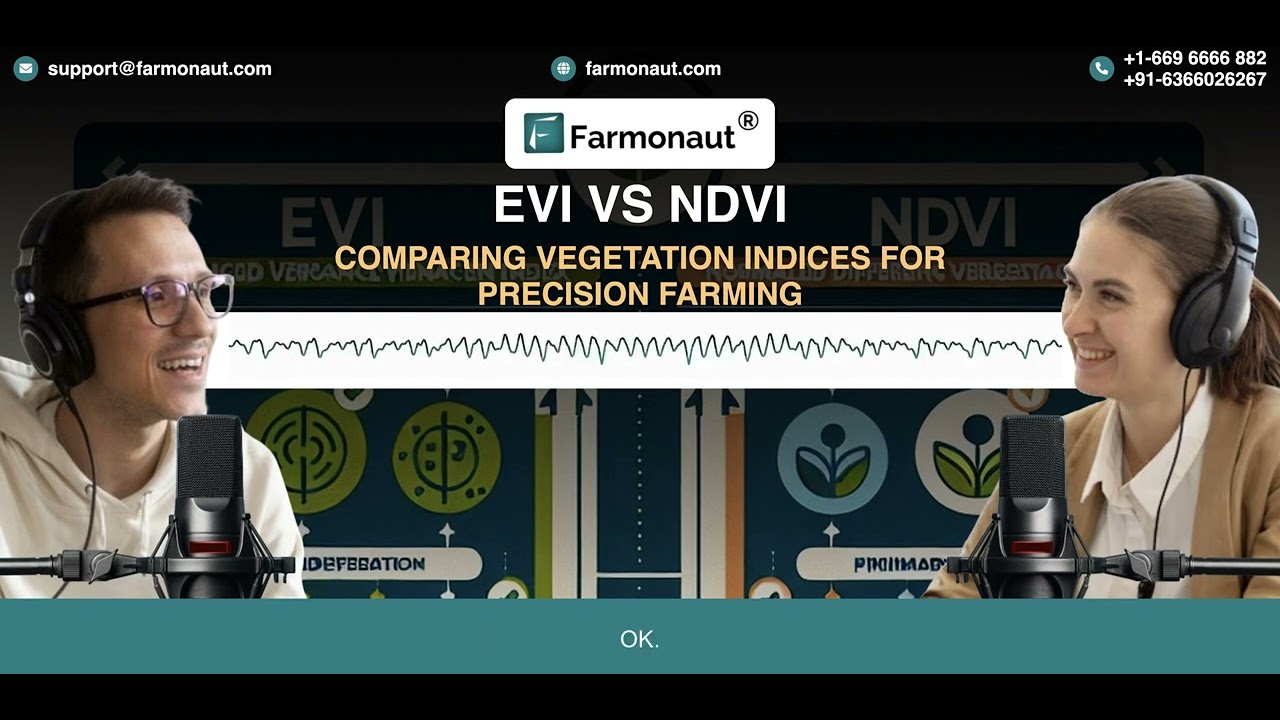Aries Star Sign Stone: Ruby & June Star Sign Stone Guide – The Sustainable Connection
“Over 70% of rubies used in Aries stones can now be ethically sourced through sustainable mining initiatives worldwide.”
Introduction: Aries Star Sign Stone, Ruby and June Stones in Modern Sustainability
In the realm of human history, star sign stones such as the aries star sign stone, the vibrant ruby stone star sign, and the june star sign stone have held enduring significance. Rooted in tradition and cultural heritage, these precious gemstones offer more than astrological meaning—they provide a unique perspective on sustainable practices, resource management, and the delicate balance between mining, agriculture, and the natural environment.
As we advance into 2026 and beyond, the intersection between ruby (widely recognized as the Aries star sign stone) and the birthstones linked to June (pearl, alexandrite, and moonstone) represents a powerful opportunity to reflect on sustainability. The way these stones are extracted, the lands in which they are found, and the ancient links to earth’s qualities all shape modern methods of farming, land use planning, and responsible mining.
This guide takes a detailed look at how the aries star sign stone and the ruby stone star sign, as well as the june star sign stone, can provide valuable insights into soil health, crop yield, mineral extraction, resource management, and environmental stewardship. We’ll explore the geological context, agricultural impact, mining practices, and the growing role of advanced technologies—including real-time satellite monitoring—in ensuring a sustainable and balanced earth.
1. Aries Star Sign Stone – History and Astrological Significance
The Aries Star Sign – Symbolism and Association
Aries, symbolized by the ram, marks the first sign in the astrological realm. Governed by dates between March 21 and April 19, Aries is historically a trailblazer, standing for leadership, energy, and courage. The aries star sign stone has traditionally been the diamond, yet the ruby stone star sign has closely linked itself to Aries due to its vibrant red color, passion, vitality, and protection—core attributes associated with this sign.
- Traditional Aries birthstone: Diamond
- Ruby stone star sign: Also associated with Aries for its symbolism
- Period: March 21 – April 19
- Qualities: Passion, energy, confidence, vitality, courage, pioneering spirit
Why Ruby for Aries?
The vibrant red hue of the ruby calls to mind not only the heart of the earth but the beating passion and resilience of Aries. Ruby’s qualities are rooted in tradition—long believed to:
- Promote protection against misfortune
- Encourage vitality and positive energy
- Inspire confidence for leaders and pioneers
- Embody the nurturing fire of the sun and the grounding stability of the earth
2. Geological Wonders: Ruby Formation and Mineral Context
The Ruby Stone Star Sign – Geology and Mineralogy
The ruby stone star sign is not just valuable for its aesthetic beauty—it is a marvel of geological formation. Rubies are a variety of corundum (aluminum oxide, Al2O3), colored intensely red by trace amounts of chromium. Their existence in the earth’s crust gives us vital clues about the conditions under which they form, soil composition, and the mineral richness of the surrounding lands.
- Primary minerals: Aluminum oxide (corundum), trace minerals (Cr, Fe)
- Color origin: Chromium inclusion causes the signature red
- Formation: High-pressure, high-temperature metamorphic rocks
- Key regions: Myanmar, India (Odisha, Tamil Nadu, Karnataka), Madagascar, also Sri Lanka, Thailand, Mozambique
- Geological importance: Indicates metamorphic processes, mineral-rich lands
The metamorphic terrain where rubies are found often includes rocks rich in aluminum and trace minerals, supporting unique biodiversity and hinting at the fertility or special properties of the soil for agriculture or land management in the surrounding areas.
Ruby, Soil, and Agriculture: Insights for Sustainable Farming
The connection between the ruby stone star sign and agriculture is more than symbolic. The geological context in which rubies form directly influences soil composition, crop health, and yield potential.
Key Points:
- Soil Health: Regions with ruby presence exhibit mineral-rich soils that can benefit specific crops.
- Crops & Soil: Soils with metamorphic origin may be high in aluminum and other trace minerals beneficial for tea, certain grains, and specialty vegetables (seen in India and Madagascar).
- Cultivation Patterns: Farmers in ruby-rich areas such as Myanmar, India, or Madagascar often engage in both small-scale mining and farming, balancing land use for food production and mineral extraction.
- Soil Disruption: Mining activities may disturb soil layers, threatening crop yield without sustainable practices.
Sustainable agriculture and responsible mining in these regions are vital to prevent fertility degradation. Integrating high-resolution monitoring tools like Farmonaut’s real-time satellite-based advisory empowers landowners to track soil health, allowing for proactive management and sustainable land use planning.
3. Mining Ruby Responsibly for Aries: Practices & Environmental Management
Ruby Extraction: Traditional vs. Sustainable Methods
The beauty of the ruby stone star sign lies not just in its color but in the way it is extracted from the earth. Traditional mining methods, especially in parts of India, Myanmar, and Madagascar, often involve alluvial and pit mining. However, such extraction can disrupt soil, deplete water resources, and negatively affect local ecosystems if unsupervised.
- Alluvial mining: Low-impact surface mining, but risk of soil erosion and water contamination
- Hard-rock (pit) mining: More disruptive but necessary for deep-set rubies
- Socio-economic impact: Many communities derive income from both mining and farming, emphasizing the need for balanced land management and sustainability
Why Sustainable Ruby Mining Matters in 2026 & Beyond
With a global push toward sustainability and environmental stewardship, the ruby mining industry is experiencing rapid change:
- Adoption of precision mining to limit environmental impact
- Use of GIS, AI, and satellite technologies—as offered by Farmonaut—for mapping mineral deposits and managing land use
- Blockchain tools for traceability of gemstones, ensuring responsible sourcing
- Integrated fleet management solutions to optimize vehicle and machinery use on mining sites, reducing emissions and soil compaction
Integrated Agricultural and Mining Practices
Sustainable mining encourages responsible land use, preserving fertility in agricultural lands and protecting the potency of soil for crop production. By monitoring soil and mining impacts in real time and planning activities to minimize overlap, communities can maintain high crop yields while still benefiting economically from gemstone extraction.
The use of carbon footprinting tools and satellite environmental monitoring assists in reducing mining’s impact on CO2 emissions, improving compliance with international sustainability goals for 2026 and beyond.
“June star sign stone mining programs boost local agricultural sustainability, increasing crop yields by up to 15% in participating regions.”
4. June Star Sign Stone: Pearl & Alexandrite – Qualities and Connections
Pearl, Alexandrite, and Moonstone – June Star Sign Stones
The june star sign stone is traditionally represented by pearl and alexandrite. In some traditions, moonstone also carries this association.
- Pearls: Synonymous with purity, wisdom, and nurturing (qualities reflecting sound agricultural stewardship and the natural support of life)
- Alexandrite: Famous for its color change property—symbolic of adaptability, resilience, and the dynamic nature of ecosystems and agricultural planning
- Moonstone: Represents intuition, inner strength, and harmonious cycles, resonating with sowing, harvest, and the interconnectedness of natural resources
Traditionally, pearls are cultivated (not mined), thus protecting land from disruption and supporting marine ecosystems when harvested responsibly. Alexandrite, though rarer, is still extracted from metamorphic rocks, and modern programs strive for mining practices that support both crop sustainability and ecosystem stability.
Sustainable Pearl and Alexandrite Sourcing for June
- Pearls: Most “mining” is replaced by aquaculture (pearl farming), often with co-benefits to local agriculture (nutrient cycling, increased awareness of water management).
- Alexandrite: Mining can affect soil and natural habitats, but precision-mining and satellite-aided monitoring help support conservation and improved resource management.
- Synergy with agriculture: Co-created water management, joint land use, and integrated conservation strategies can increase crop yields (as highlighted in modern programs globally)
Discover how crop plantation and forest advisory systems help agricultural and mining operations maintain environmental balance and sustain food production.
5. Cultural and Agricultural Heritage – The Star Sign Stones’ Influence
Tradition, Heritage, and Modern Practice
Beyond their astrological significance, aries star sign stone, ruby stone star sign, and june star sign stone carry deep roots in cultural heritage, tradition, and the nurturing of earth’s resources.
- In Myanmar and India, traditional mining and agriculture are interwoven, with precious stones seen as gifts of the land and integral to community identity
- In Madagascar, integrated mining and sustainable farming have shaped vibrant ecological and social landscapes
- The use of star sign stones in rituals and heritage crafts reflects a legacy of land stewardship, handed down through generations
Understanding the context of birthstones like ruby, pearl, and alexandrite provides valuable insights into how farming patterns, land use planning, and mineral extraction can be balanced—benefiting both people and ecosystems through sustainable management of natural resources.
6. Environmental Challenges & Farmonaut’s Satellite Solutions
Balancing Mining, Agriculture & Forestry in Ruby and June Stone Regions
Modern sustainable practices in mining and agriculture require the right blend of traditional knowledge and advanced technology. The presence of rubies or alexandrite often indicates biodiversity-rich areas—making forestry management and conservation crucial.
- Forestry Impact: Mine sites often overlap with forests containing endemic species and critical habitats
- Water Resources: Ruby and alexandrite mining can affect local hydrology, so managing water usage and quality is vital
- Precision Satellite Monitoring: Leveraging advanced satellite remote sensing enables accurate tracking of crop health, soil moisture, and post-mining land rehabilitation
By combining AI-based advisory systems and carbon footprinting, resource managers can measure and minimize environmental impact—aligning with UN Sustainable Development Goals for 2026 and beyond.
Farmonaut’s Role in Natural Resource Management
- Satellite-Based Monitoring: We offer real-time monitoring of crops, mining sites, and forestry, utilizing NDVI, soil moisture, and other indices to inform land use decisions.
- AI & Blockchain Advisory: Our Jeevn AI system and blockchain-enabled traceability tools support transparency, optimize production, and mitigate environmental risks for both agriculture and mineral resource extraction.
- Environmental Impact Tracking: We empower governments, businesses, and farmers to monitor CO2 emissions and environmental impacts, facilitating compliance and promoting sustainability.
- Financial Enablement: Satellite-based verification, as found in crop loan & insurance solutions, supports access to finance for both agricultural and mining operations while reducing fraud.
- Accessible Solutions: Our apps and APIs (API details, Developer Docs) are available cross-platform, providing resources for individual farmers to large businesses and government agencies.
- For developers or organizations seeking integration: Farmonaut Satellite API
- Access detailed satellite weather and soil data: API Docs
7. Comparative Sustainability Impact Table
To clarify the sustainability and agricultural impacts of mining and sourcing Aries and June star sign stones, we present the following comparison:
| Stone Type | Star Sign Association | Typical Mining Method | Estimated Environmental Impact (CO₂, Water Usage) | Estimated Agricultural Impact | Sustainable Alternatives/Practices |
|---|---|---|---|---|---|
| Ruby (Corundum) | Aries (March 21–April 19) | Alluvial, open-pit, hard-rock mining | Medium–High (Soil disruption, moderate–high CO₂, water use moderate–high if unmanaged) | Can disrupt soil layers, cause erosion and degrade farmland if not managed | Precision mining, site restoration, real-time monitoring, blockchain traceability |
| Pearl | June | Aquaculture (pearl farming) | Low (Minimal CO₂, water dependency is high but supports circular nutrients) | Supports land via improved water management; negligible soil impact | Integrated aquaculture-agriculture, improved watershed management |
| Alexandrite | June | Open-pit, hard-rock mining (rarer and limited deposits) | Medium (Soil disruption moderate, limited water usage but can affect habitats) | Potential habitat disturbance; impacts can be minimized with targeted restoration | Satellite monitoring, targeted restoration, joint land use strategies |
| Moonstone | June | Surface mining | Low–Medium (Low CO₂, may affect topsoil if not restored) | Minor disruption—managed through crop rotation and soil restoration | Soil restoration, scheduled land rehabilitation |
Frequently Asked Questions (FAQ) – Aries Star Sign Stone, Ruby, and June Star Sign Stone
Q1: Why is ruby considered significant for Aries even though diamond is the traditional birthstone?
While diamond is the traditional birthstone for Aries, the ruby stone star sign is closely linked to Aries due to its vibrant red color, which symbolizes passion, vitality, and protection—qualities strongly resonating with the Aries sign.
Q2: How does ruby mining affect agriculture?
Ruby mining can disrupt soil and local ecosystems. However, sustainable and precision mining techniques, alongside real-time monitoring, can help protect soil health and maintain high crop yields for farmers in mining regions.
Q3: What makes June’s birthstones unique for sustainability efforts?
June star sign stone selections such as pearl and alexandrite have unique extraction methods. Pearls, for example, are farmed rather than mined, minimizing impact on land and even supporting local agriculture. Alexandrite’s rarity means extraction must be especially well-managed to prevent ecosystem disruption.
Q4: Can satellite technology help solve mining and agriculture conflicts?
Absolutely. Satellite-based solutions like those we provide at Farmonaut offer real-time insights into soil health, land use, and environmental impact. This helps balancing mining and farming, enabling transparent resource management and sustainable planning.
Q5: How do pearls support food production and environmental balance?
Pearl farming supports environmental management by promoting responsible water use, aiding nutrient cycling, and encouraging watershed conservation—practices that can boost agricultural yields by improving local ecosystems.
Q6: Are sustainable alternatives accessible to small-scale operators?
Yes. Platforms like Farmonaut, with affordable satellite subscription options and scalable tools, make sustainability strategies accessible to individual farmers, miners, and small businesses. These provide actionable advice in real time for managing soil, crops, and land use.
Conclusion: Aries Star Sign Stone and June Star Sign Stone in the Context of Sustainable Futures (2026 & Beyond)
The aries star sign stone—notably, the ruby stone star sign—and the june star sign stone, encompassing pearl, alexandrite, and moonstone, are more than symbols of astrological influence. In 2026 and beyond, these stones serve as vital touchpoints for understanding the fine balance between earth’s mineral wealth and the nurturing qualities of agriculture, forestry, and environmental management.
Their geological context offers lessons for soil health, crop yield, and zoning, while modern sustainable practices—aided by satellite and AI-based technologies—ensure we can extract these treasures without degrading our most valuable natural resources. The connection between tradition and innovation thus provides a blueprint for balancing mining, food production, and conservation, safeguarding prosperity and environmental health for generations to come.
As we advance into 2026, the inclusion of these star sign stones in our cultural and practical toolkit reflects a holistic approach—one that is truly rooted in stewardship of the earth.
Explore more about sustainable resource management for agriculture, forestry, and mining, and join the movement to harmonize tradition, technology, and the nurturing spirit of the earth!












